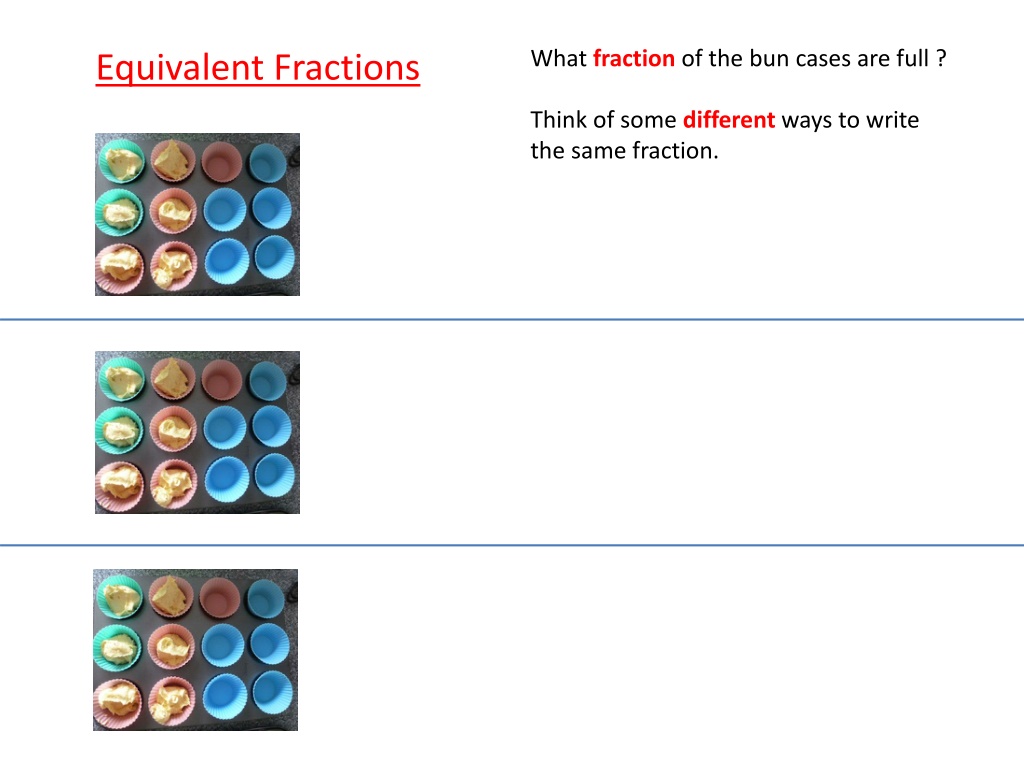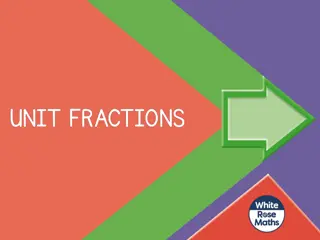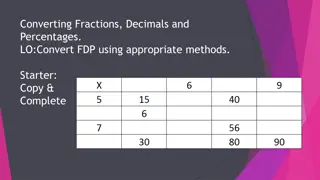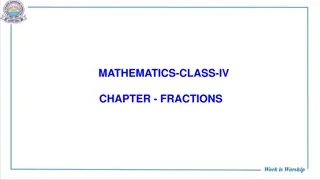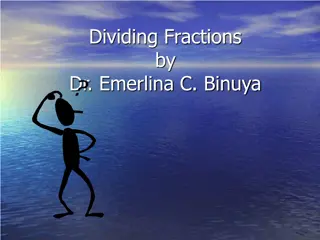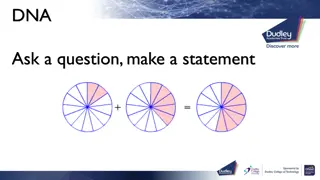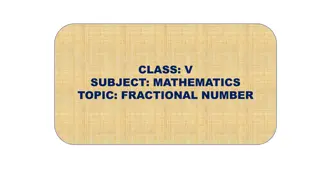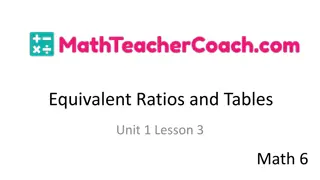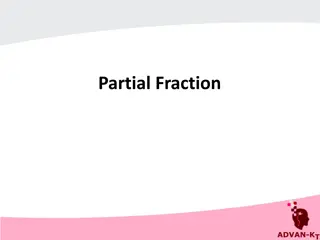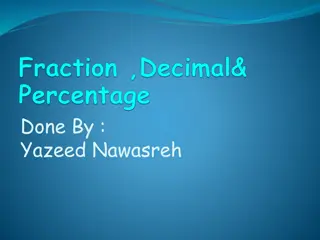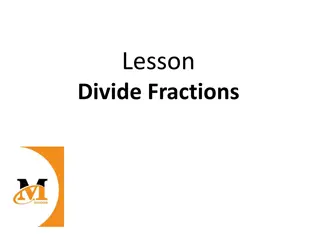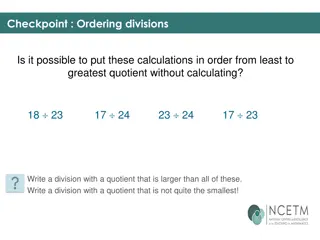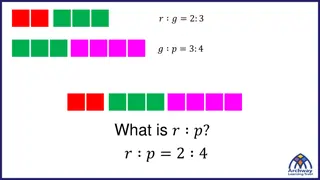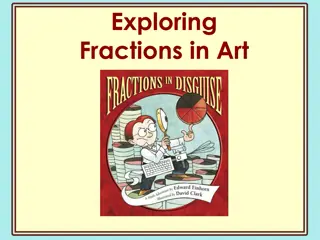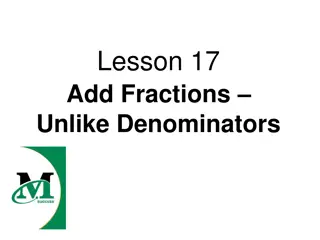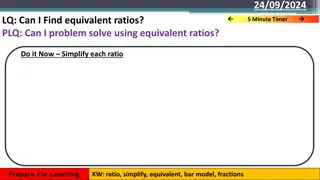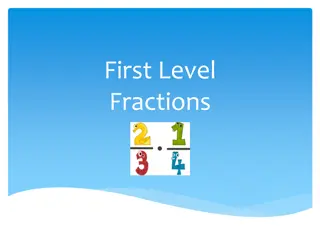Exploring Equivalent Fractions and Fraction Representation
The images and questions provided present various scenarios involving fractions, such as bun cases, pills, eggs, shapes, and chocolate bars, aiming to enhance understanding of equivalent fractions and fraction representations. The visuals help illustrate fraction concepts in a clear and engaging manner.
Download Presentation

Please find below an Image/Link to download the presentation.
The content on the website is provided AS IS for your information and personal use only. It may not be sold, licensed, or shared on other websites without obtaining consent from the author. Download presentation by click this link. If you encounter any issues during the download, it is possible that the publisher has removed the file from their server.
E N D
Presentation Transcript
What fraction of the bun cases are full ? Equivalent Fractions Think of some different ways to write the same fraction.
What fraction of the bun cases are full now ? Write the fraction in different ways. What fraction of the bun cases are empty ?
What fraction of the bun cases are full ? Can you find different ways to write the fraction ? What fraction of the bun cases are empty ?
What fraction of the pills have been used ? Write two equivalent fractions. What fraction of the pills are left ?
What fraction of the eggs are left in each box ? Write the fraction in different ways.
3 5 3 5 Shade Shade What fraction of each shape is unshaded ?
2 3 2 3 Shade Shade What fraction of each shape is unshaded ?
3 4 3 4 Shade Shade What fraction of each shape is unshaded ?
This bar of chocolate is made up of eighteen squares. Show how to split the bar up to show these equivalent fractions. Fill in the missing number. 1 2 = 18 1 3 = 18 1 6 = 18
This bar of chocolate is made up of thirty pieces. Show how to split the bar up to show these equivalent fractions. Fill in the missing number. 1 2 = 30 1 3 = 30 1 5 = 30
